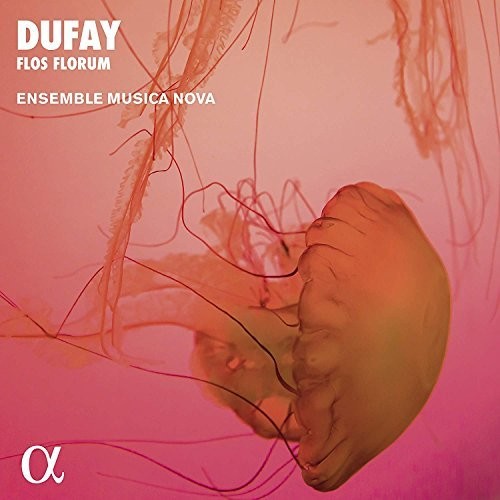Show results for
Deals
- 4K Ultra HD Sale
- 50s Films Sale
- Action Sale
- Alternative Rock Sale
- Anime sale
- Award Winners Sale
- Bear Family Sale
- Blu ray Sale
- Blues on Sale
- British Sale
- Christmas in July
- Classical Music Sale
- Comedy Music Sale
- Comedy Sale
- Country Sale
- Criterion Sale
- Electronic Music sale
- Folk Music Sale
- Horror Sci fi Sale
- Kids and Family Sale
- Metal Sale
- Music Video Sale
- Musicals on Sale
- Mystery Sale
- Naxos Label Sale
- Page to Screen Sale
- Paramount Sale
- Rap and Hip Hop Sale
- Reggae Sale
- Rock
- Rock and Pop Sale
- Rock Legends
- Soul Music Sale
- TV Sale
- Vinyl on Sale
- War Films and Westerns on Sale

Flos Florum
- Format: CD
- Release Date: 8/24/2018

Flos Florum
- Format: CD
- Release Date: 8/24/2018
- Label: Alpha
- UPC: 3760014193491
- Item #: 2064825X
- Genre: Classical
- Release Date: 8/24/2018

Product Notes
Like many of his contemporaries, Guillaume Dufay was greatly devoted to the Virgin Mary. His Marian works comprise liturgical pieces sung during the Mass or the Office, but also religious motets written to new poems. It was probably during his first period in the chapel of the dukes of Savoy that Dufay produced a complete cycle of polyphonic hymns for the Office of Vespers of the principal feasts. Their interpretation obeys the principle of alternatim chant, that is to say alternation between monophonic odd-numbered verses, sung in plainchant, and even-numbered polyphonic verses. Dufay employs here the techniques of composition already in use in the fourteenth century. The liturgical melody is sung in the highest voice but appears transformed according to the principles of paraphrase: the composer's inventive contribution, in this context, resides in the flexibility of the mensuration (often ternary) and the grace of his ornamentation. The other two, lower voices accompany it in a virtually homophonic style. The influence of the improvisatory practice known as 'fauxbourdon' is manifest. In it's simple form, the melody of the cantus is doubled by the tenor and the contratenor, respectively a sixth and a fourth lower. The result is a succession of highly characteristic chords, interrupted only for the cadences.

